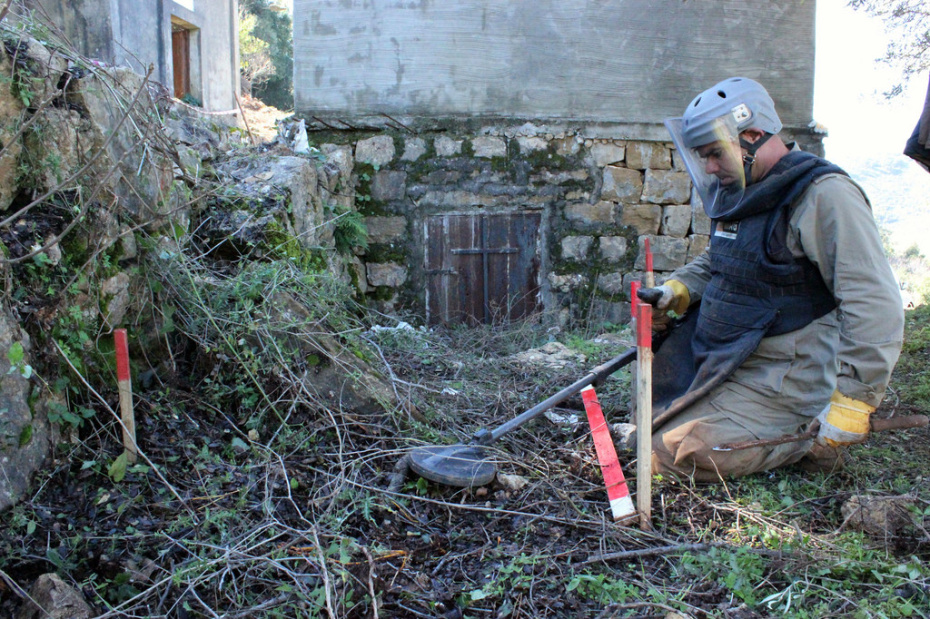Breadcrumb

Alert over growing use of cluster munitions, despite stockpile reductions

Over the last decade, the hair-trigger devices have caused more than 4,300 recorded casualties in 20 countries, according to the Cluster Munition Monitor 2020, although it said that the true number is likely much higher.
Hot off the press!
— UNMAS (@UNMAS) November 25, 2020
Cluster Munition Monitor 2020 covers:
✅cluster munition ban policy,
✅use, production, transfers and stockpiling
✅impact of cluster munition contamination and casualties
Download your free copy here ➡️ https://t.co/9C3gzcpt4O pic.twitter.com/3LGw81WYcE
Between August 2010 and July 2020, cluster munitions were deployed in seven countries that have not signed the global disarmament treaty banning them: Cambodia, Libya, South Sudan, Sudan, Syria, Ukraine, and Yemen.
While their use over the last decade in these countries has been largely “sporadic” or “isolated”, Syria has been the exception, given their “continual use since 2012”, said Monitor contributor Steve Goose, head of Human Rights Watch’s Arms Division.
According to the Monitor, Syria has consistently accounted for more than 80 per cent of all cluster munition casualties worldwide, with children making up around four in 10 of all victims.
‘Unacceptable’ use
Researchers also identified the lethal use of the weapons in Libya last year, and their use by both Armenia and Azerbaijan, in the Nagorno-Karabakh conflict.
“The sustained use of banned cluster munitions in Syria and new use in Libya and Nagorno-Karabakh, is unacceptable”, said Marion Loddo, editorial manager of the Monitor.
It was imperative for the 110 States that have joined the global treaty banning cluster munitions to “speak out to condemn the civilian death toll and the threat to lives and livelihoods”, from areas that are still contaminated with the weapons, Ms. Loddo added.
Allegations of new cluster munition use in Yemen and in the contested region of Kashmir on the India-Pakistan border were also examined, but no “conclusive determination” was possible, the Monitor said.
Despite concerns that a total of 286 new cluster munition casualties were recorded in 2019 - a 92 per cent increase on 2018, linked mainly to attacks in Syria - it remains far below the annual total of 971 casualties recorded in 2016, the Monitor said.
Indiscriminate ‘bomblets’
Cluster munitions are released either from the air or launched from the ground in a canister containing hundreds of “bomblets” which scatter indiscriminately over wide areas. They are not aimed at a specific target and up to 40 per cent of the explosive devices fail to detonate initially, with devastating results for anyone who comes across them.
The release of the report comes as States Parties to the convention gather virtually to discuss further steps on bringing more States onboard with the treaty to ban cluster munitions, which entered into force in 2010.

Stockpiles wiped out
Highlighting the success of the Convention in “making a real difference in saving lives and limbs and livelihoods”, Monitor contributor Steve Goose reiterated that since States agreed to start destroying their stockpiles in line with the Convention, 36 of them have destroyed 1.5 million cluster munitions containing more than 178 million sub-munitions have been destroyed.
This represents the destruction of 99 per cent of the total global cluster munitions stocks declared by States, Mr. Goose said, noting that 18 countries have stopped producing them including the UK and France, but 16 others outside the convention continue to make them, including two that are actively “researching and developing “new types”.
Deadly harvest
In total, 26 countries and other areas have been contaminated by cluster munition remnants, including 10 States Parties to the Convention, which also prohibits the use, production and transfer of the weapons.
Over the past decade, six State Parties have completed clearance of areas contaminated by cluster munition remnants, the Monitor said, most recently Croatia and Montenegro in July 2020.
In 2019 alone, at least 82 square kilometres of contaminated land was cleared by States, resulting in the destruction of more than 96,500 cluster munition remnants, both increases from 2018.
